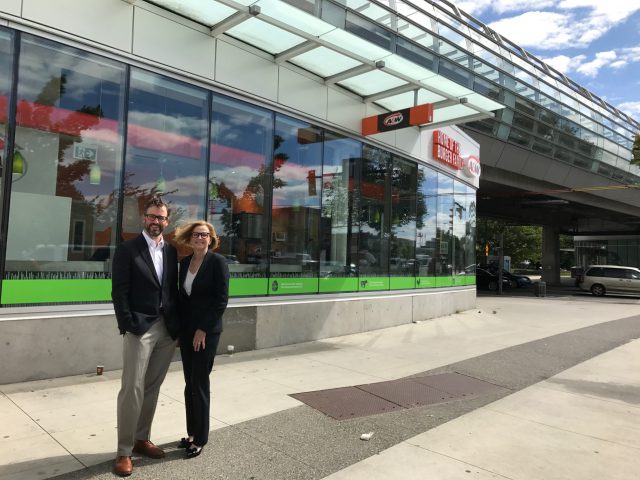This innovative TransLink program projects to generate $1 million in revenue
This innovative TransLink program projects to generate $1 million in revenue

Retail is popping up at SkyTrain stations—it’s all part of TransLink’s innovative retail real estate program. This program is already generating about $500,000 per year in additional revenue, and we’re projecting, within five years, to double that figure to about $1 million annually!
How is TransLink doing this? As part of ongoing SkyTrain station upgrades along the Expo Line, TransLink is turning under-used spaces into coveted retail spaces. While revenue from the retail real estate program will not fund the system in its entirety, it is offsetting costs for our customers and providing them with added comfort and convenience.
Recently, we added our first 24-hour retailer at Main Street–Science World Station, an A&W restaurant. This creates a constant human presence at the station, which can put customers at ease and provide them with a safe place to go.
This is just the start for us. We’re continuing to explore new ways to include retail at stations as we continue upgrades along the Expo Line. One day, with technological advancements, you might even be able to pay at these retailers using your Compass Card!
Want to learn more? Check out these stories:
- CBC News: TransLink aims to nearly double retail space in 5 years
- Metro: TransLink plans more retail space in stations
- Business in Vancouver: TransLink seeks retailers to ramp up revenue
Author: Allen Tung






If Compass Card is to be accepted in retail, TransLink should ABSOLUTELY NOT require all merchants to obtain a dedicated Compass processor (i.e. reader+writer unit for Compass) like Octopus Cards Limited in Hong Kong requiring merchants to have a dedicated Octopus processor. Instead, TransLink should simply require merchants to update their existing contactless terminal software or download an app onto their NFC-enabled mobile device (smartphone, tablet, smartwatch, etc.). This is so there isn’t any confusion on which processor/reader to tap on and helps keep the merchant’s area neat and tidy (something like Singapore’s Unified POS: http://www.channelnewsasia.com/news/singapore/cold-storage-7-eleven-among-stores-to-have-unified-payment-8817176). The only time the merchant must obtain a dedicated Compass processor is if the merchant uses an iOS device as a POS, has neither an existing contactless terminal (including a Square contactless and chip reader: ) nor an NFC-enabled device. For Compass to be successful in retail payments is also reducing initial costs, service and transaction fees, and other charges for using the service to levels lower than the lowest fee available in Canada. I.e. at least lower than INTERAC. Best is to charge no service nor transaction fees and other fees associated to using the service (except equipment and hardware rentals and purchases). Even with the low fees available with INTERAC, there are still plenty of shops do not accept debit nor credit but cash only. Especially at produce markets and Asian fast food vendors in Asian shopping centres like Crystal Mall where cash is the only method of payment accepted.